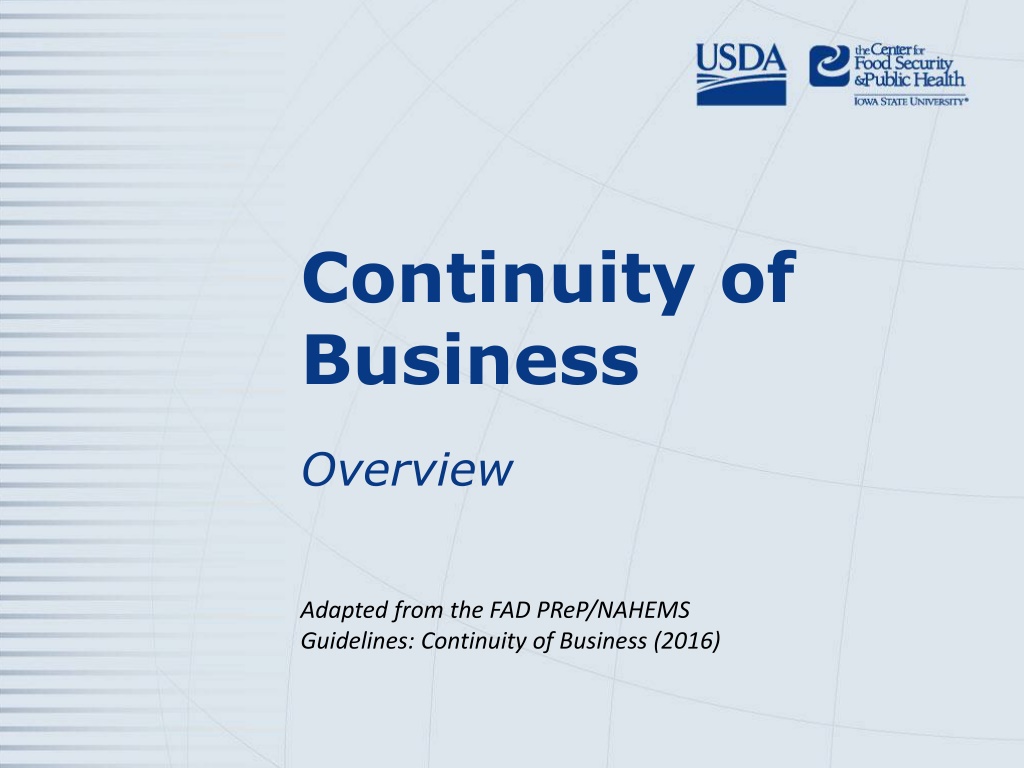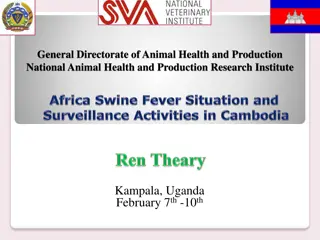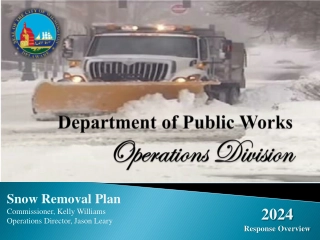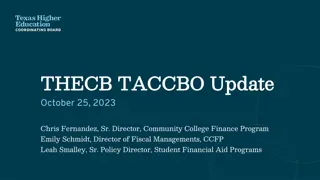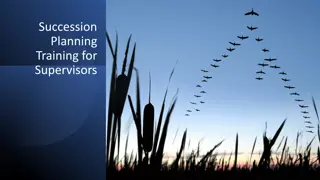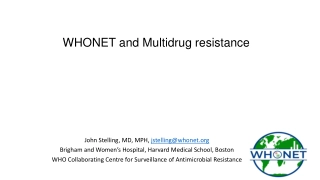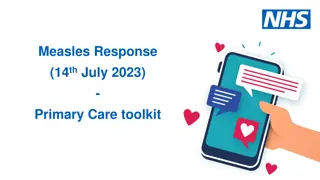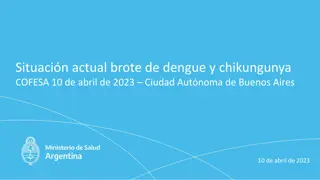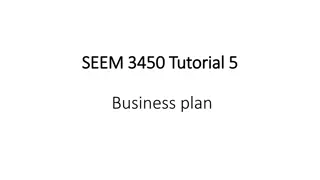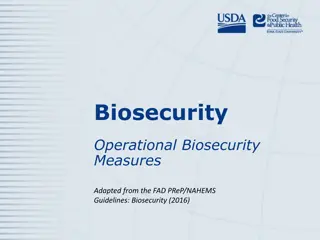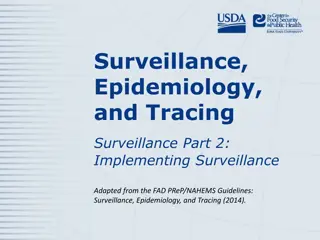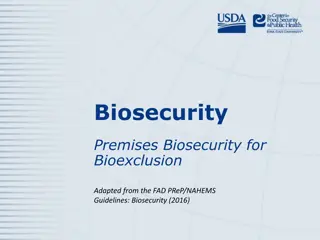Comprehensive Overview of Continuity of Business in FAD Outbreaks
Continuity of Business (COB), also known as managed movement, is a crucial strategy that allows the movement of non-infected animals and non-contaminated animal products during a Foreign Animal Disease (FAD) outbreak. This approach helps maintain normal business operations in agriculture and food industries while mitigating the risks associated with such movements. The goals of COB preparedness include prioritizing affected animal or commodity movements, establishing risk assessments and biosecurity procedures, and promoting stakeholder compliance with regulatory interventions. In response to an outbreak, implementing the appropriate COB plan and facilitating the movement of non-infected animals play vital roles. Regulatory intervention and the scope of regulation are determined based on various factors, such as outbreak consequences, trade disruption, national security threats, and available resources. Overall, COB is a proactive and essential component in managing FAD outbreaks.
Download Presentation
Please find below an Image/Link to download the presentation.
The content on the website is provided AS IS for your information and personal use only. It may not be sold, licensed, or shared on other websites without obtaining consent from the author. Download presentation by click this link. If you encounter any issues during the download, it is possible that the publisher has removed the file from their server.
Presentation Transcript
Continuity of Business Overview Adapted from the FAD PReP/NAHEMS Guidelines: Continuity of Business (2016)
Continuity of Business Also known as managed movement Allows movement of non-infected animals and non-contaminated animal products from non-infected premises during an FAD outbreak. Helps agriculture and food industries to maintain normal business operations but mitigates the risks of animal and product movements. The Secure Food Supply Plans FAD PReP/NAHEMS Guidelines: Continuity of Business- Overview USDA APHIS and CFSPH
Preparedness and Response Goals of COB in an FAD Outbreak FAD PReP/NAHEMS Guidelines: Continuity of Business- Overview USDA APHIS and CFSPH
Goals of COB Preparedness Prioritize animal or commodity movements that may be affected by disease or the disease response. Establish a system for risk assessments, surveillance requirements, biosecurity procedures, and permitting to promote stakeholder compliance with regulatory interventions. FAD PReP/NAHEMS Guidelines: Continuity of Business- Overview USDA APHIS and CFSPH
Goals of COB Response Implement the appropriate COB plan for the industries or industry segments affected by the outbreak. Facilitate and permit the movement of non-infected animals and non- contaminated animal products from non-infected premises. FAD PReP/NAHEMS Guidelines: Continuity of Business- Overview USDA APHIS and CFSPH
Regulatory Intervention in an FAD Outbreak FAD PReP/NAHEMS Guidelines: Continuity of Business- Overview USDA APHIS and CFSPH
Scope of Regulation Determined by Consequences of the outbreak Disruption to interstate and international trade Threat to national security, food security, animal health, the environment, and the economy Acceptance of response policy Scale of the outbreak Rate of outbreak spread Veterinary countermeasures available Resources available for response FAD PReP/NAHEMS Guidelines: Continuity of Business- Overview USDA APHIS and CFSPH
Quarantine & Movement Control (QMC) Quarantine Stringent restrictions on entering or leaving an area where disease is known to exist or is suspected In an FAD outbreak, quarantine broadly prohibits movements of animals, animal products, and fomites from a specified premises, area, or region Movement control Criteria for the movement of animals within a regulatory Control Area From non-infected premises Requires permits Based on specific criteria FAD PReP/NAHEMS Guidelines: Continuity of Business- Overview USDA APHIS and CFSPH
Authorities FAD PReP/NAHEMS Guidelines: Continuity of Business- Overview USDA APHIS and CFSPH
USDA APHIS Authorities The Code of Laws of the United States of America (U.S.C.) are statues that have been passed by Congress and signed by the President. The Code of Federal Regulations (CFR) provides detailed interpretations of the U.S.C. as developed by the Executive branch agencies with comment allowed from the public. APHIS receives its permanent and general regulatory authority from the Animal Health Protection Act (AHPA). 7 U.S.C. 8301 et seq. Title 9 of the CFR provides APHIS detailed regulations on the control and eradication of animal diseases. FAD PReP/NAHEMS Guidelines: Continuity of Business- Overview USDA APHIS and CFSPH
State Authorities Early stages of a response, including QMC, will involve State, Tribal, and local authorities and resources. Typically, State quarantine orders are issued when an FAD is detected or suspected. Relevant authorities vary by State and situation. Authority of the State Animal Health Official is also variable by State. FAD PReP/NAHEMS Guidelines: Continuity of Business- Overview USDA APHIS and CFSPH
COB as Part of an FAD Response FAD PReP/NAHEMS Guidelines: Continuity of Business- Overview USDA APHIS and CFSPH
Critical Activities Public awareness campaign Swift imposition of effective QMC Rapid diagnosis and reporting Epidemiological investigation and tracing Increased surveillance COB measures for non- infected animals and non- contaminated animal products Biosecurity measures Cleaning and disinfection measures Effective and appropriate disposal procedures Mass depopulation and euthanasia Emergency vaccination FAD PReP/NAHEMS Guidelines: Continuity of Business- Overview USDA APHIS and CFSPH
Critical Activities Critical Activities in the First 72 Hours of an FAD Outbreak FAD PReP/NAHEMS Guidelines: Continuity of Business- Overview USDA APHIS and CFSPH
COB & QMC COB Managed movement for non-infected premises in a Control Area At-Risk and Monitored Premises Industries maintain essential business functions (or return to business) during an outbreak Risk of disease spread is managed Limits impact of outbreak on indirectly affected parties QMC Keeps an FAD out of non-infected livestock and poultry populations to stop the spread of disease Stops or significantly limits the movement of animals, products, fomites, vehicles, and equipment Quarantines apply to Infected, Contact, and Suspect Premises FAD PReP/NAHEMS Guidelines: Continuity of Business- Overview USDA APHIS and CFSPH
COB & QMC COB and QMC have the same goal of preventing the transmission of an FAD to non-infected premises, particularly those outside the control area. FAD PReP/NAHEMS Guidelines: Continuity of Business- Overview USDA APHIS and CFSPH
COB Plans for Managed Movement: Creating the Plans and Processes FAD PReP/NAHEMS Guidelines: Continuity of Business- Overview USDA APHIS and CFSPH
Key Elements Risk assessments Surveillance requirements Biosecurity guidance Cleaning and disinfection Epidemiological and premises information Permitting guidance Information management FAD PReP/NAHEMS Guidelines: Continuity of Business- Overview USDA APHIS and CFSPH
How COB Works FAD PReP/NAHEMS Guidelines: Continuity of Business- Overview USDA APHIS and CFSPH
Collaboration COB planning requires the interaction of public officials, private sector, and academia/extension experts. Prior to an outbreak, these groups develop processes to move animals and products from non-infected premises. Proactive risk assessments are used to establish requirements for movement. FAD PReP/NAHEMS Guidelines: Continuity of Business- Overview USDA APHIS and CFSPH
Challenges Sector diversity Acquiring consensus Addressing competing needs and priorities Keeping momentum going during planning Delegating tasks Clear responsibilities Lack of resources Effective use of resources Buy-in from stakeholder groups FAD PReP/NAHEMS Guidelines: Continuity of Business- Overview USDA APHIS and CFSPH
Continuity of Business: The Bigger Picture FAD PReP/NAHEMS Guidelines: Continuity of Business- Overview USDA APHIS and CFSPH
The Bigger Picture COB benefits: Planning helps protect animal health, food security, and public health Continued supply of animals and animal products Reduced production disruption and lessened economic impacts on rural communities Improved understanding of the needs of industry, regulators, and consumers when dealing with an FAD response FAD PReP/NAHEMS Guidelines: Continuity of Business- Overview USDA APHIS and CFSPH
Emergency Management COB fits into the emergency management framework FAD PReP/NAHEMS Guidelines: Continuity of Business- Overview USDA APHIS and CFSPH
Current COB Planning Efforts (Secure Food Supply Projects) FAD PReP/NAHEMS Guidelines: Continuity of Business- Overview USDA APHIS and CFSPH
Secure Food Supply Current public-private-academic collaborations and Secure Food Supply projects include: Secure Poultry Supply Plan Secure Egg Supply Plan Secure Broiler Supply Plan Secure Turkey Supply Plan Secure Milk Supply Plan National Regional Secure Pork Supply FAD PReP/NAHEMS Guidelines: Biosecurity - Overview USDA APHIS and CFSPH
For More Information FAD PReP/NAHEMS Guidelines: Continuity of Business (2016) and related documents http://www.aphis.usda.gov/fadprep/ Federal Emergency Management Agency (FEMA) www.ready.gov FEMA Business Recovery www.ready.gov/business Secure Food Supply Plans www.securepoultrysupply.com www.securemilksupply.org www.securepork.org FAD PReP/NAHEMS Guidelines: Biosecurity - Overview USDA APHIS and CFSPH
